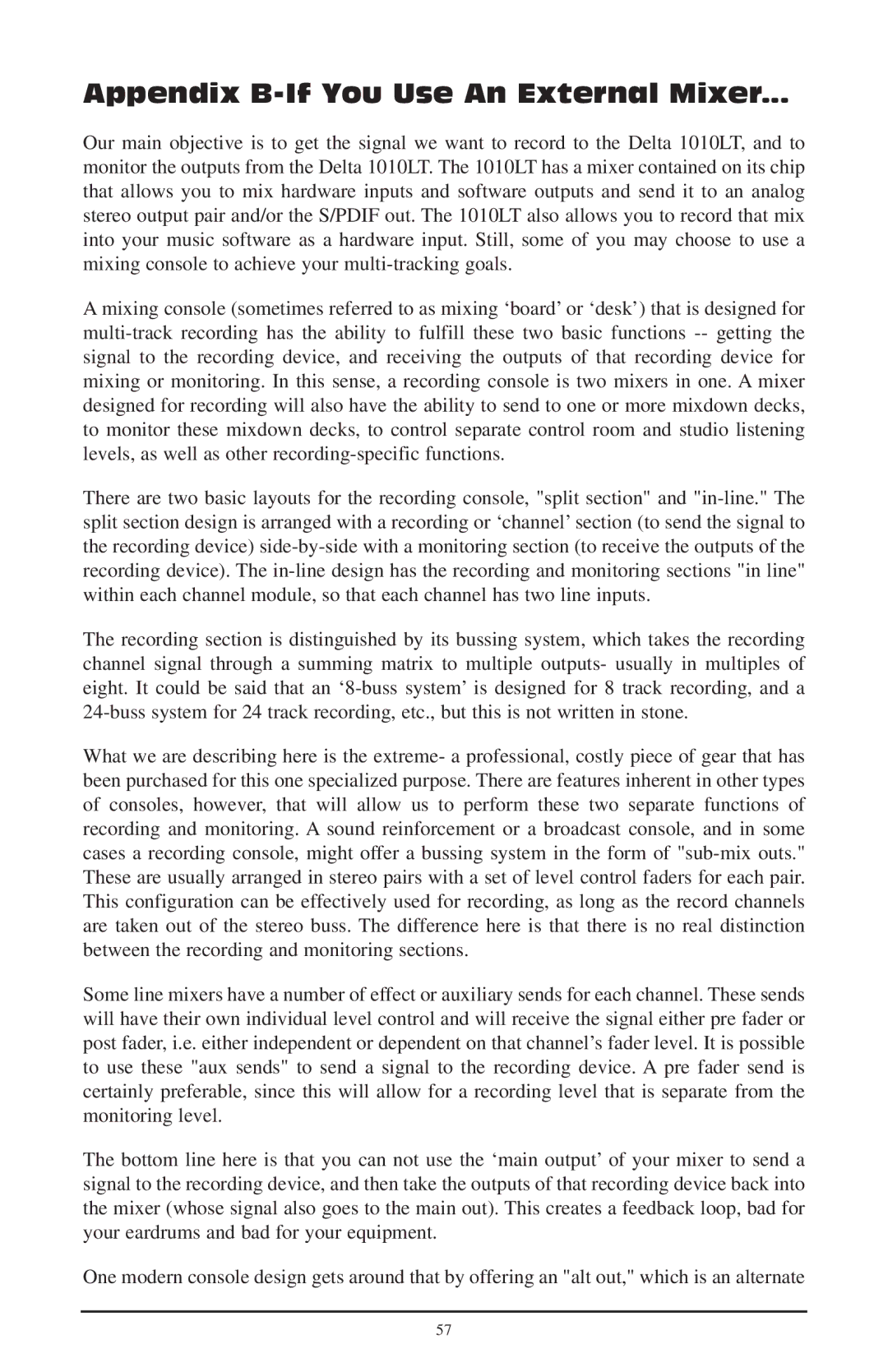Appendix B-If You Use An External Mixer...
Our main objective is to get the signal we want to record to the Delta 1010LT, and to monitor the outputs from the Delta 1010LT. The 1010LT has a mixer contained on its chip that allows you to mix hardware inputs and software outputs and send it to an analog stereo output pair and/or the S/PDIF out. The 1010LT also allows you to record that mix into your music software as a hardware input. Still, some of you may choose to use a mixing console to achieve your
A mixing console (sometimes referred to as mixing ‘board’ or ‘desk’) that is designed for
There are two basic layouts for the recording console, "split section" and
The recording section is distinguished by its bussing system, which takes the recording channel signal through a summing matrix to multiple outputs- usually in multiples of eight. It could be said that an
What we are describing here is the extreme- a professional, costly piece of gear that has been purchased for this one specialized purpose. There are features inherent in other types of consoles, however, that will allow us to perform these two separate functions of recording and monitoring. A sound reinforcement or a broadcast console, and in some cases a recording console, might offer a bussing system in the form of
Some line mixers have a number of effect or auxiliary sends for each channel. These sends will have their own individual level control and will receive the signal either pre fader or post fader, i.e. either independent or dependent on that channel’s fader level. It is possible to use these "aux sends" to send a signal to the recording device. A pre fader send is certainly preferable, since this will allow for a recording level that is separate from the monitoring level.
The bottom line here is that you can not use the ‘main output’ of your mixer to send a signal to the recording device, and then take the outputs of that recording device back into the mixer (whose signal also goes to the main out). This creates a feedback loop, bad for your eardrums and bad for your equipment.
One modern console design gets around that by offering an "alt out," which is an alternate
57
